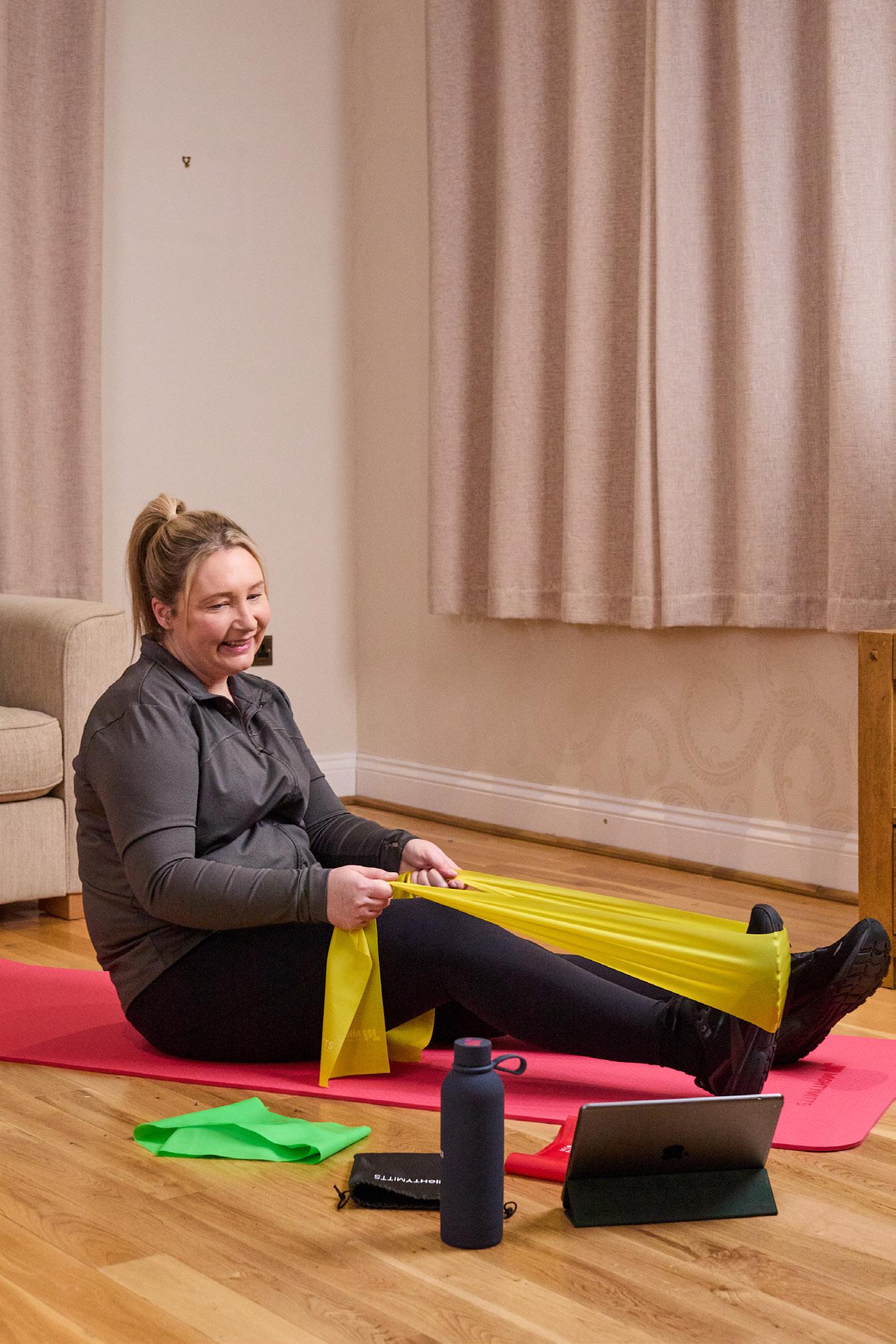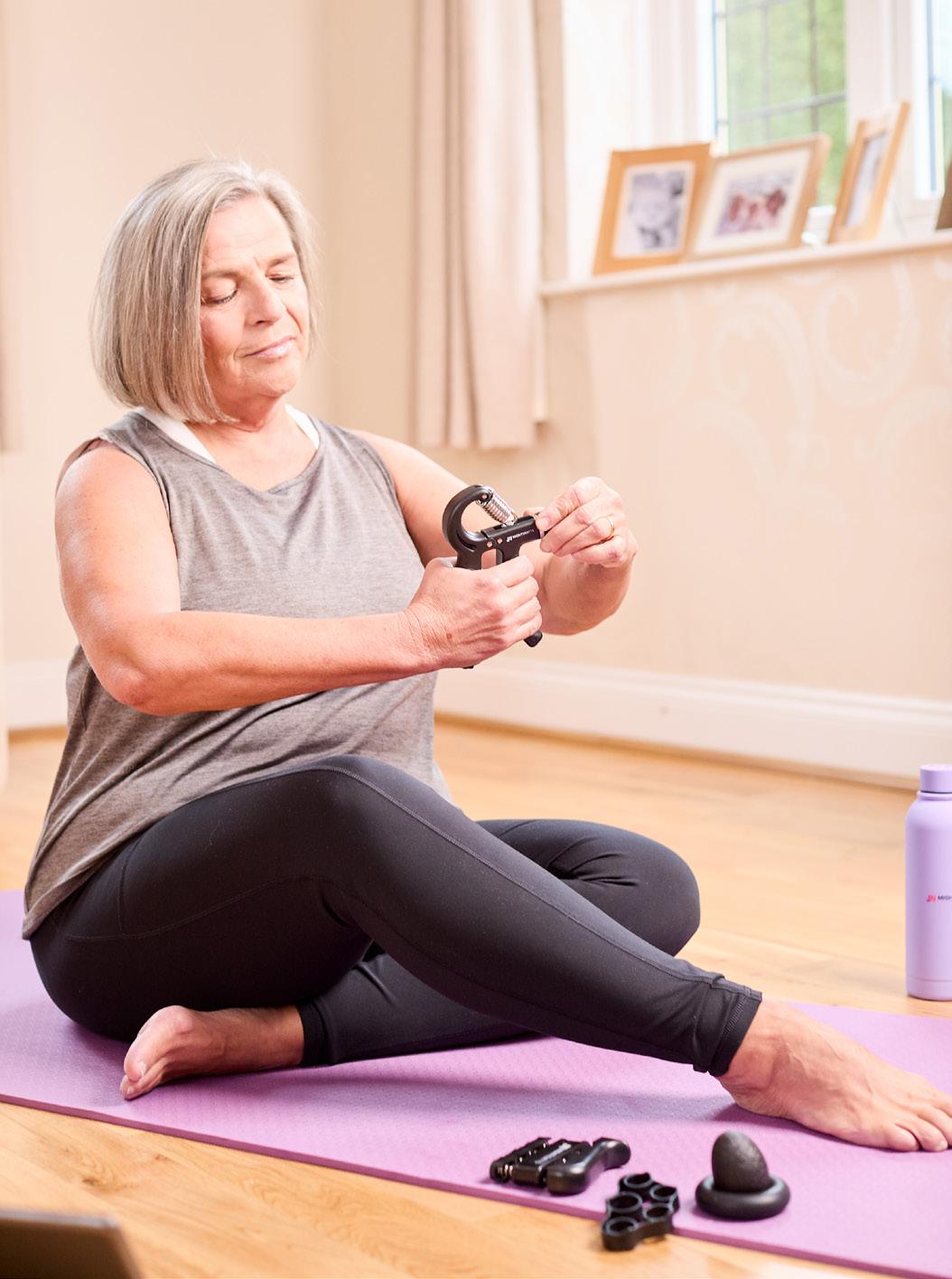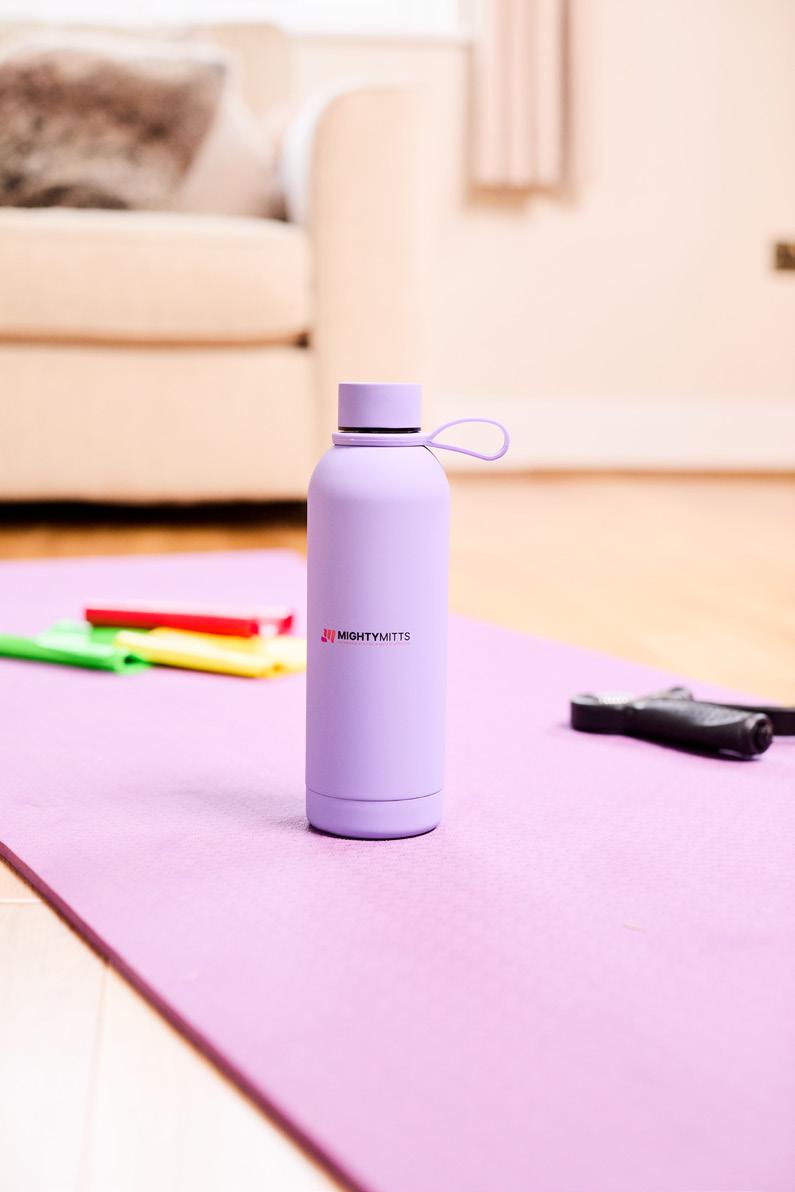



12 Week Exercise Program
Maintaining and enhancing strength, mobility, balance, and grip strength is key to staying active, independent, and healthy as you age. This program is designed to help you build and maintain muscle strength to support bone health, balance and stability. Enhance grip strength, a key indicator of overall physical health and function, linked to lower risks of chronic diseases and better longevity. Improve mobility, vital for joint health, quality of life and later life independence. Improve balance to reduce the risk of falls and maintain independence and confidence in daily activities. Support cardiovascular health and fitness, one of the most important factors for reducing our risk of cardiovascular disease, high blood pressure, cardiac complications and chronic disease risk. Build sustainable habits by adopting achievable exercise goals and approaches.
This is a digital self guided booklet that can be printed out and used. This is not access to online classes or an personal trainer.
The Mighty Mitts 12-Week Exercise Program: Your Science-Backed Guide to a Healthier You
Adults often face unique challenges related to declining muscle mass, bone health, balance, and change in nutrition needs. MightyMitts created a program to address these challenges head-on.
Our 12-week exercise program is a carefully crafted plan, built on years of scientific research and designed to deliver real results. It's a structured and effective approach to improving your health and well-being through exercise.
Developed in collaboration with a range of healthcare professionals, including clinical exercise physiologists, licensed physiotherapists, clinical personal trainers and registered dieticians our program covers everything you need on your journey to better health with safe, effective and progressive exercises supported by user friendly tools and a nutrition guide to help you fuel your body right.
Why 12 Weeks?
- Building Habits: Research shows that it takes around 12 weeks to establish new habits. Our program provides the structure and support you need to make exercise a regular part of your life. (Source: Lally et al., 2010)
- Seeing Results: Within 12 weeks, you'll start to see and feel real improvements in your grip, strength, balance, mobility, and your mood. This can boost your motivation and help you stay committed to your health goals. (Source: Kemmler et al., 2015)
The Science Behind the Program
Our program is based on the latest scientific evidence in exercise science and healthy ageing. It incorporates a variety of exercises that have been proven to:
- Increase muscle mass and strength: Combatting age-related muscle loss (sarcopenia). (Source: Liu & Latham, 2009)
- Improve bone density: Reducing the risk of osteoporosis and fractures. (Source: Hong & Kim, 2018)
- Enhance cardiovascular health: Promoting heart health and circulation. (Source: Kokkinos et al., 2010)
- Boost metabolic health: Aiding in blood sugar regulation and weight management. (Source: Church et al., 2002)
- Support cognitive function: Potentially protecting against cognitive decline and promoting brain health. (Source: Sofi et al., 2011)
Why Home-Based Exercise Works
You don't need a fancy gym or expensive equipment to improve your health! Research shows that home-based exercise programs can be just as effective as gym-based programs, and they offer several advantages: (Source: Rhodes et al., 2017):
- Exceptional Value: Get everything you need in our Health kit – comprehensive approach, the right set of tools, expert guidance, and motivation to improve your grip, strength, balance, and mobility.
- Convenience: Exercise whenever it fits your schedule, but creating and keeping a routine is critical.
- Comfort: Workout in a familiar and comfortable environment.
- Curated and Designed by Professionals: Evidence based program.
We are making healthspan available to everyone.
Sources
- Church, T. S., Blair, S. N., Cocreham, S., et al. (2002). Effects of aerobic and resistance training on hemoglobin A1c levels in patients with type 2 diabetes: a randomized controlled trial. JAMA, 288(12), 1522–1530.
- Hong, A. R., & Kim, S. W. (2018). Effects of Resistance Exercise on Bone Health. Korean Journal of Family Medicine, 39(4), 208–215.
- Kemmler, W., von Stengel, S., Engelke, K., & Lauber, D. (2015). Exercise and fractures in postmenopausal women: a randomized controlled trial of a 12-month multicomponent exercise program. Osteoporosis International, 26(10), 2479–2490.
- Kokkinos, P. F., Giannopoulos, G., Manolis, A. S., et al. (2010). Physical activity in the prevention and management of high blood pressure. Hellenic Journal of Cardiology, 51(2), 136–142.
- Lally, P., van Jaarsveld, C. H. M., Potts, H. W. W., & Wardle, J. (2010). How are habits formed: Modelling habit formation in the real world. European Journal of Social Psychology, 40(6), 998–1009.
- Liu, C.-J., & Latham, N. K. (2009). Progressive resistance strength training for improving physical function in older adults. Cochrane Database of Systematic Reviews, (3), CD002759.
- Rhodes, R. E., Jorgensen, C. M., Brennan, D. S., et al. (2017). Effectiveness of home-based physical activity interventions for adults with type 2 diabetes: a systematic review and meta-analysis. Diabetes Care, 40(3), 359–368.
- Sofi, F., Valecchi, D., Bacchetti, T., & Abbate, R. (2011). Physical activity and risk of cognitive decline: a meta-analysis of prospective studies. Journal of Internal Medicine, 269(1), 107–117.




